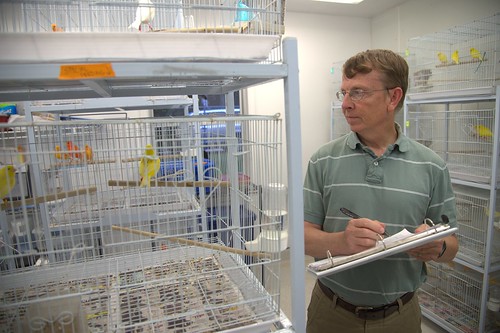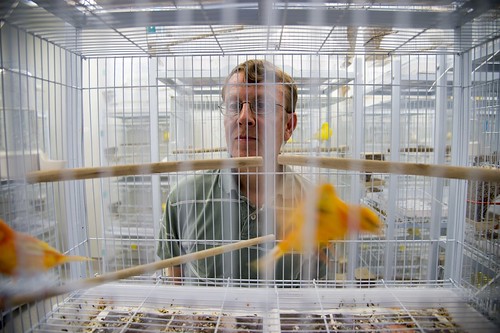COSAM professor part of team that discovers redness gene in birds
Why do some birds have red feathers? Geoffrey Hill, professor in the Department of Biological Sciences at Auburn University, finally found an answer to this deceptively challenging question.
Thanks to modern genomics and a collaborative effort by Hill and an international team of scientists, including colleagues Miguel Carneiro at the University of Porto in Portugal and Joseph Corbo at Washington University in St. Louis, the key gene that enables birds to have red coloring in their feathers and skin is now identified. Their study is in the journal, Current Biology, at http://www.cell.com/current-biology/fulltext/S0960-9822(16)30401-8.
"Red coloration is a prominent feature of many species of birds," said Hill. "Most birds that show red coloration get the coloring from a special class of pigments called carotenoids. These are becoming more familiar to the public because carotenoids like lutein are now being put in vitamins. So, the same pigments that help with our vision and serve other vitamin functions are also the basis for red feathers in birds."
To make the discovery, the team focused on a special breed of canary—red factor canaries—which were developed in pre-World War II Germany. Breeders crossed yellow canaries with a South American finch known as a red siskin and then backcrossed with a canary.
"They created a genotype that was a mix of half canary and half siskin, but then they backcrossed the hybrid line with canaries each generation, keeping the offspring with red feathers," said Hill. "They kept selecting out all siskin traits except redness. The result was a bird that looks like a normal canary and sounds like a normal canary except it has red feathers.
"These birds are called 'red factor' canaries because the genetic factor that enables birds to be red was moved from siskins to canaries. With modern genomics, we set out to find the gene that was transferred. We knew what a canary genotype looked like and we knew what the siskin genotype looked like. Using these new tools, the genes that had been inserted into the canary genome lit up like a Christmas tree."
Not only is this discovery beneficial for basic biology, but the red pigment also has implications in the food industry as well as medicine.
"This gives us tremendous insight into the genetic mechanisms that control animal coloration," said Hill. "As for commercial application, the same pigments that make a bird's feathers red also make the flesh of salmon and trout red. Farm-raised salmon are not red unless they are color-fed with red carotenoids. This new enzyme is potentially a new synthetic pathway for creating valuable pigments for a global industry."
The pigments are also linked to cardiovascular health and control of oxidative stress in human bodies, which could be significant in developing new products and medications.
The study is a culmination of a decade of work. It was funded, in part, by grants from Auburn University's Office of the Vice President for Research and Economic Development along with the National Science Foundation.
The team is patenting the process related to the red carotenoids.
"Things we did in the study like genomic sequencing, which are now routine in modern biology, were unknown 10 years ago," said Hill. "Our study was a success thanks to the technology becoming available, and also due to a great group of experts working together."
Latest Headlines
-
02/12/2025
-
02/11/2025
-
02/10/2025
-
01/30/2025
-
12/03/2024




